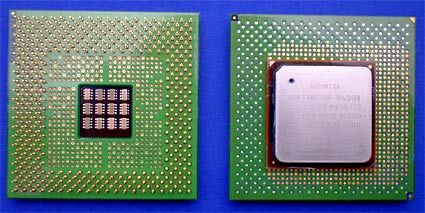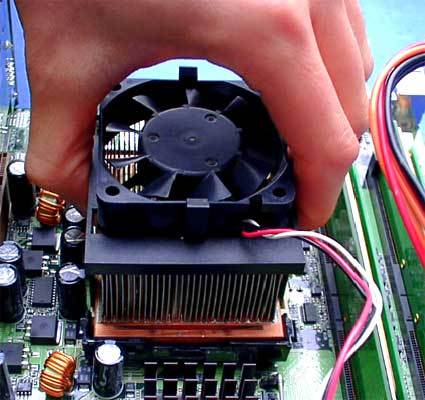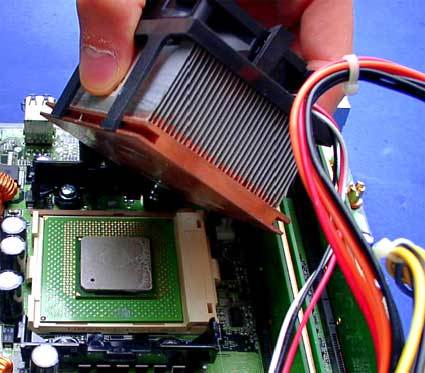Hot Spot: How Modern Processors Cope With Heat Emergencies
Intel Pentium 4 2 GHz - System Slowdown
After the removal of the heat sink, Quake 3 Arena is slowing down significantly, but the system remains fully operational. The surface temperature of the Pentium 4 processor is a mere 29 degrees Celsius or 84 degrees Fahrenheit. After we put the heat sink back in place, the system performance went up to the original level. This shows that Pentium 4 has an excellent thermal design. The processor does not take any damage and you are not even losing data, because the system remains operational.
The best way to watch the events as they are taking place is to download our digital test-lab video. You will find it at the end of the article.
The Pentium 4 core comes equipped with a thermal monitoring unit that permanently checks the temperature. As soon as the core temperature has reached a certain trigger value, the thermal unit throttles down the clock of Pentium 4 until a safe temperature has been reached.
This solution is clearly commendable and proves that Intel's idea of equipping Pentium 4 with clock-throttling was far from a bad idea, as some sources want to make us believe. It is pretty much impossible to 'fry' a Pentium 4 processor. Additionally, Pentium 4 remains operational even once the thermal catastrophe took place and the heat sink fell off.
It also needs to be said that Intel's heat sink design specs leave hardly any room for an accident in which the heat sink comes off. The method that keeps the Pentium 4 heat sink in place is a very sturdy solution. This is also valid for the new Pentium 4 for Socket478.
Get Tom's Hardware's best news and in-depth reviews, straight to your inbox.
Current page: Intel Pentium 4 2 GHz - System Slowdown
Prev Page The Test Candidates Next Page Intel Pentium III 1 GHz - System Hang / CPU Alive

